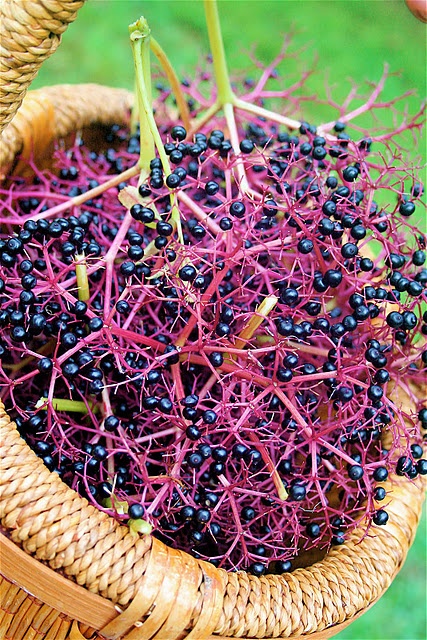
Elder Wisdom, Part 1
Coy Domecq
This article has a backstory I would like to share. I was driving through North Carolina while attempting to channel the Inspiration Muses for my next natural forgeable-food feature. The result of this effort was, “I wonder about elderberry.” In an attempt to maximize my technology safely, I pulled my vehicle off the highway and looked up elderberry on my phone. The heavens favored me with an elderberry producer within 20 miles of the direction of my destination. After a phone call, an impromptu appointment was set to delve into elderberry knowledge. More to follow on this visit.
The American elderberry, Sambucus canadensis, (formerly thought to be a member of the honeysuckle family, but since reclassified) is native to eastern and Midwestern United States. There are many species and varieties of elderberry, each with their unique characteristics. The plant/human interaction in the United States has an origin and long history of use among Native Americans. Within this group, the predominant medicinal use was to treat fever and rheumatism.
As an important part of the “food is medicine” philosophy, elderberry not only has a host of contemporary folk remedy applications, some with mounting scientific medical support, but it also has a taste that is justification enough for consumption. Nutritionally, elderberry provides a food high in vitamins A and C, and contains the highest antioxidant level of all the edible berries.
Ann and Roger Lendhardt, an engaging and industrious couple, welcomed me into their home with genuine enthusiasm about their efforts to spread the gospel regarding the benefits of elderberry through their family business, Norm’s Farms. Not only did I purchase an elderberry plant from Roger, but also they were kind enough to offer a generous sampling of their elderberry products for me to try. I can vouch for the both the quality and flavor of their offerings and invite you to explore their informative website. (https://normsfarms.com/pages/about-us) Norm’s Farms currently has a promotion of free shipping on mail orders and has a presence in local retail outlets.
Because the elderberry story has so much more information to offer, I will follow up with a Part 2 for the next issue. It seems, for me at least, Roger and Ann’s elderberry enthusiasm is contagious.

Elderberry Pie (From- Food.com)
INGREDIENTS
- cups elderberries 1 1⁄4 cups sugar
6 tablespoons flour2 tablespoons lemon juice
1⁄2 teaspoon cinnamon2 tablespoons butter
Double-crust 9-inch pie
NUTRITION INFO
Serving Size: 1 (165) g
Servings Per Recipe: 8
AMT. PER SERVING % DAILY VALUE
Calories: 221.9
Calories from Fat 29 g 13 %
Total Fat 3.3 g 5 %
Saturated Fat 1.9 g 9 %
Cholesterol 7.6 mg 2 %
Sodium 30.2 mg 1 %
Total Carbohydrate 49.5 g 16 %
Dietary Fiber 5.3 g 21 %
Sugars 31.3 g 125 %
Protein 1.1 g 2 %
DIRECTIONS
Preheat oven to 425 degrees Fahrenheit.
Combine berries, sugar, flour, and lemon juice in a medium saucepan.
Heat mixture until it just starts to boil, stirring occasionally.
Remove from heat and let cool for 15 minutes.
Spread berry mixture in pie shell, sprinkle cinnamon and dot butter on top.
Put top crust on and seal edges, poke several vent holes in top crust.
Bake at 425 degrees Fahrenheit for 10 minutes. Reduce heat to 350 degrees Fahrenheit, leaving pie in oven, and bake for 30 minutes longer.